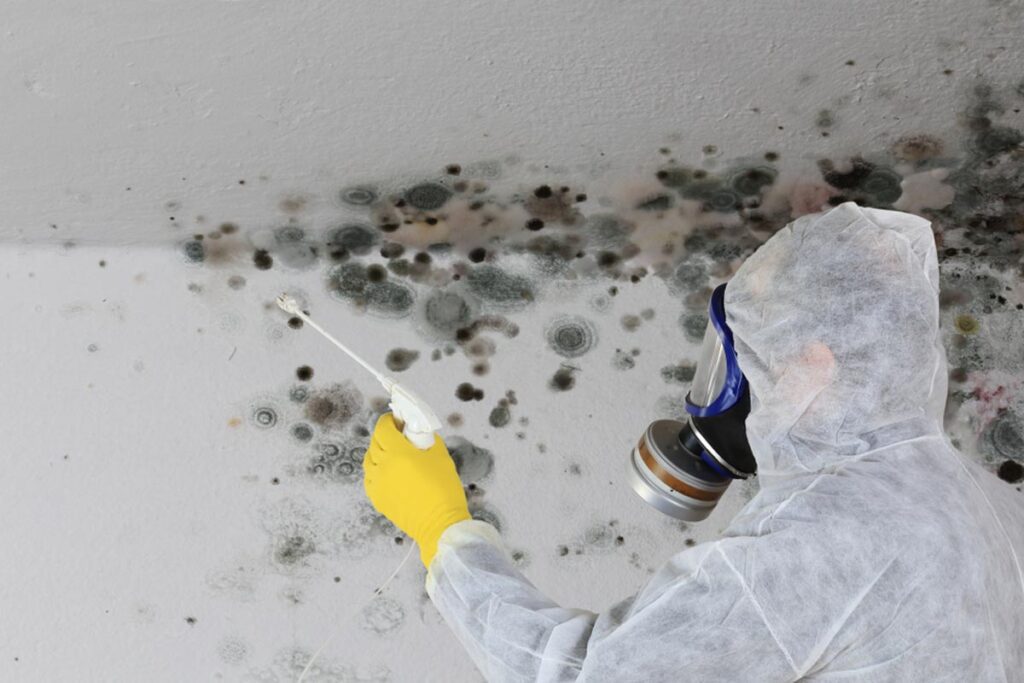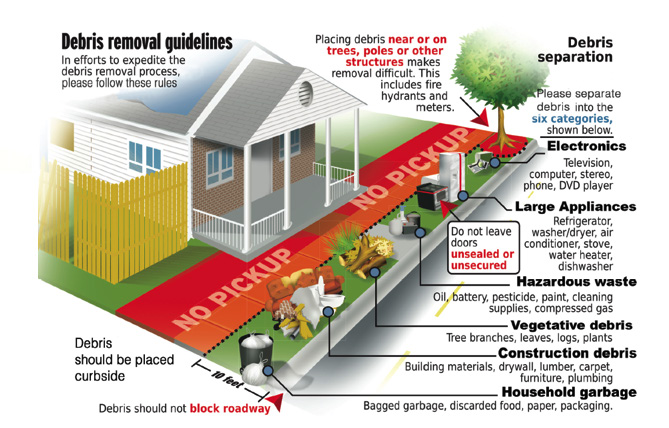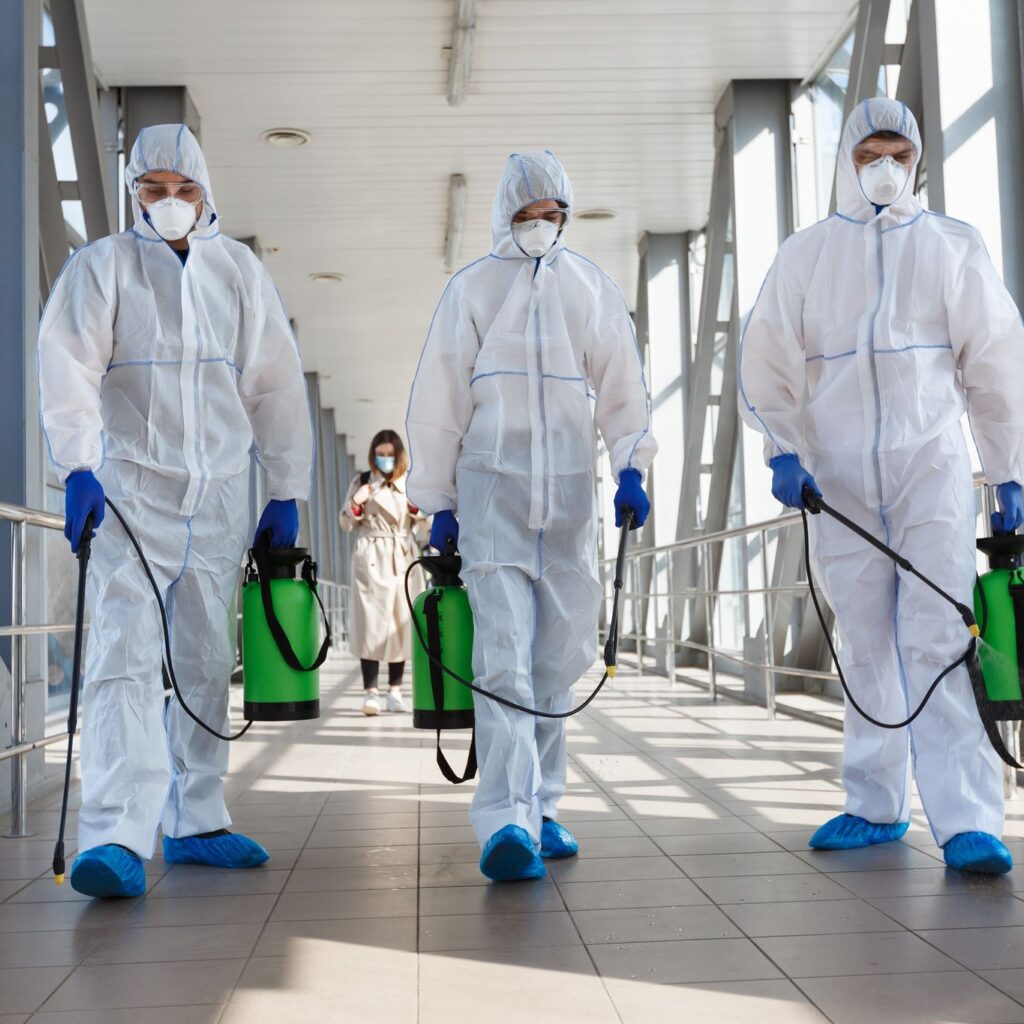Are you dealing with mold removal in your Miami property? Once the mold has been successfully removed, it’s crucial to take the necessary steps to prevent its return and ensure the health and safety of your home. In this article, we will provide you with a comprehensive guide on the essential steps you should take after mold removal in your Miami property. From thorough cleaning and disinfection to addressing the underlying moisture issue, we’ve got you covered. So, let’s get started and make sure your property stays mold-free!

Inspect the Property
After mold removal in your Miami property, the first step you should take is to thoroughly inspect the entire area. This will help you determine if any mold spores or residue are still present and ensure that the mold remediation process was successful. Start by visually inspecting the walls, ceilings, floors, and other surfaces for any signs of mold growth or water damage. Pay close attention to areas that were previously affected by mold to see if there are any lingering issues. Additionally, use your nose to detect any musty or earthy odors that could indicate the presence of hidden mold. Taking the time to carefully inspect your property will provide you with valuable information and help you move forward with confidence.
Ensure Successful Mold Remediation
Assess the Mold Removal Process
To ensure that the mold removal process was successful, it is crucial to assess the steps that were taken during the remediation. If you hired a professional mold remediation company, review the documentation they provided, such as the work plan and any reports or certificates. Examine these documents to make sure that the necessary procedures were followed and the appropriate equipment was used. If you conducted the mold removal yourself, evaluate the effectiveness of your methods and consider seeking a professional opinion to confirm the success of your efforts. Assessing the mold removal process will give you peace of mind and help you determine if any additional actions are needed.
Confirm the Effectiveness of the Treatment
After the mold removal process, it is important to confirm the effectiveness of the treatment. This can be achieved by conducting post-remediation testing. It involves taking air samples or swab samples from various areas of your property to test for the presence of mold spores. Hiring a certified mold inspector can provide you with accurate and reliable results. They will compare the post-remediation samples with the baseline samples taken before the mold removal to ensure that the mold spore counts are significantly reduced or non-existent. Confirming the effectiveness of the treatment will give you the assurance that your property is safe and mold-free.
Address any Lingering Mold Issues
In some cases, despite the mold removal process, there may still be lingering mold issues in your Miami property. This can occur if the source of moisture that initially caused the mold growth is not properly addressed. Therefore, it is essential to identify and rectify any water leaks or excess moisture problems. This could involve fixing plumbing issues, improving ventilation, or implementing proper drainage systems. Additionally, consider using mold-resistant materials and applying mold inhibitors to susceptible areas. By addressing any lingering mold issues, you can prevent future mold growth and protect the health and wellbeing of yourself and your property.
Clean and Disinfect
Remove Contaminated Materials
During the mold removal process, it is likely that some materials in your Miami property may have become contaminated. These could include items such as carpets, insulation, drywall, or furniture. To ensure a mold-free environment, it is important to remove and properly dispose of these contaminated materials. Be cautious while handling these items, as they can release mold spores into the air if not handled properly. Sealing them in plastic bags and wearing protective gear, such as gloves and masks, is recommended. Contact your local waste management facility or consult with a professional mold remediation specialist to ensure proper disposal of these materials in accordance with local regulations.
Thoroughly Clean the Area
Once the contaminated materials have been removed, it is time to thoroughly clean the affected area. Use a HEPA vacuum cleaner to remove any loose mold spores from surfaces such as walls, floors, and furniture. Pay extra attention to cracks, crevices, and hard-to-reach areas where mold can accumulate. After vacuuming, wipe down surfaces with a damp cloth or sponge and a mild detergent solution. This will help remove any remaining mold spores and clean the surfaces of any visible debris. Remember to dispose of the cleaning materials properly to prevent cross-contamination.
Disinfect the Surfaces
After cleaning, it is essential to disinfect the surfaces to kill any remaining mold spores or bacteria. Use a solution of water and a commercial mold disinfectant or a mixture of equal parts water and bleach (if appropriate for the surface being treated). Apply the disinfectant solution to the affected areas and allow it to sit for the recommended amount of contact time. This will ensure that any remaining mold spores are effectively eradicated. Be sure to follow the manufacturer’s instructions and use proper safety precautions when handling disinfectants. After disinfection, thoroughly rinse the surfaces with clean water and allow them to dry completely.
Improve Ventilation
One of the key factors in preventing future mold growth is improving ventilation in your Miami property. Proper ventilation helps to control moisture levels and prevent the buildup of excess humidity, which can create an ideal environment for mold growth. Open windows and doors whenever possible to allow fresh air to circulate. Consider installing or upgrading ventilation systems, such as exhaust fans, in bathrooms, kitchens, and other areas where moisture is present. Additionally, ensure that air vents and ducts are clean and unobstructed to allow for proper air circulation throughout your property.

Fix Water Leaks
Water leaks are a common cause of mold growth in Miami properties. Even after the mold removal process, it is crucial to fix any existing water leaks to prevent future mold problems. Inspect your property for any signs of water damage, such as discolored walls or ceilings, damp spots, or musty odors. If you discover a leaking pipe, a faulty roof, or any other source of water intrusion, address the issue promptly. Hire a professional plumber or contractor to repair the leaks and ensure that the affected areas are dried thoroughly. By fixing water leaks, you can eliminate a crucial factor that contributes to mold growth.
Repair or Replace Damaged Materials
In some cases, mold growth may have caused damage to building materials or personal belongings in your Miami property. After the mold removal process, it is essential to assess the extent of the damage and take appropriate action. Depending on the severity of the damage, you may need to repair or replace affected materials. This could involve patching or replacing drywall, repairing or replacing damaged flooring, or fixing compromised insulation. Consult with professionals in the respective fields to ensure that repairs are done correctly and in compliance with building codes. Additionally, consider discarding porous materials that cannot be adequately cleaned or repaired, as they can harbor hidden mold.

Schedule Regular Inspections
To maintain a mold-free environment in your Miami property, it is important to schedule regular inspections. Mold can sometimes be hidden behind walls or in other inaccessible areas, making it difficult to detect without professional assistance. By hiring a certified mold inspector to conduct regular inspections, you can identify any potential mold issues before they become major problems. These inspections can help you catch water leaks, moisture problems, or other conditions that could lead to mold growth early on. Taking proactive measures will save you time, money, and stress in the long run.
Monitor Humidity Levels
Monitoring and maintaining proper humidity levels in your Miami property is crucial for preventing mold growth. Ideally, indoor humidity should be kept between 30% and 60%. Use a hygrometer to measure humidity levels in different areas of your property. If the humidity is consistently above 60%, it indicates that your property may be at risk for mold growth. To reduce humidity, consider using dehumidifiers in high-moisture areas or installing a whole-house dehumidifier. Additionally, ensure that your property is properly insulated to prevent condensation. By monitoring and controlling humidity levels, you can significantly minimize the chances of mold growth.

Educate Yourself on Mold Prevention
After experiencing mold in your Miami property, it is important to educate yourself on mold prevention strategies. Learn about the common causes of mold growth and how to address them effectively. Understand the importance of proper ventilation, regular maintenance, and prompt action in response to water leaks or moisture problems. Familiarize yourself with the signs of mold growth and the health risks associated with exposure to mold. By arming yourself with knowledge, you can take proactive steps to prevent mold from returning and ensure a healthy living environment.
Seek Professional Help
While it is possible to handle mold removal and prevention on your own, seeking professional help can provide additional expertise and assurance.
Consult with a Mold Remediation Specialist
If you are unsure about the effectiveness of your mold removal efforts or if you are dealing with a severe mold infestation, it is advisable to consult with a mold remediation specialist. These professionals have the knowledge, skills, and equipment to effectively eliminate mold and ensure the safety of your property. They can assess the extent of the mold problem, provide recommendations for remediation, and offer guidance on preventing future mold growth. By consulting with a specialist, you can benefit from their expertise and ensure that your Miami property is thoroughly and professionally remediated.
Hire a Professional Inspector for Clearance Testing
After completing the mold removal process, hiring a professional inspector for clearance testing is highly recommended. This involves conducting a final inspection and testing to confirm that your property is free of mold and safe to inhabit. The inspector will perform visual assessments, air sampling, or surface sampling to verify the absence of mold spores. Clearance testing provides an independent evaluation of the effectiveness of the mold removal and the overall mold remediation process. By hiring a professional inspector for clearance testing, you can have peace of mind knowing that your Miami property is mold-free and ready for occupancy.
In conclusion, taking the necessary steps after mold removal in your Miami property is crucial to ensure a mold-free environment and maintain the health and safety of yourself and your property. By inspecting the property, assessing the mold removal process, and confirming the effectiveness of the treatment, you can be confident in the success of the remediation efforts. Cleaning and disinfecting the area, improving ventilation, fixing water leaks, and repairing or replacing damaged materials are essential steps to prevent future mold growth. Scheduling regular inspections, monitoring humidity levels, and educating yourself on mold prevention help maintain a mold-free environment in the long run. If needed, seeking professional help from mold remediation specialists and inspectors can provide additional expertise and peace of mind. By following these steps, you can confidently move forward after mold removal and ensure the ongoing health and wellbeing of your Miami property.
